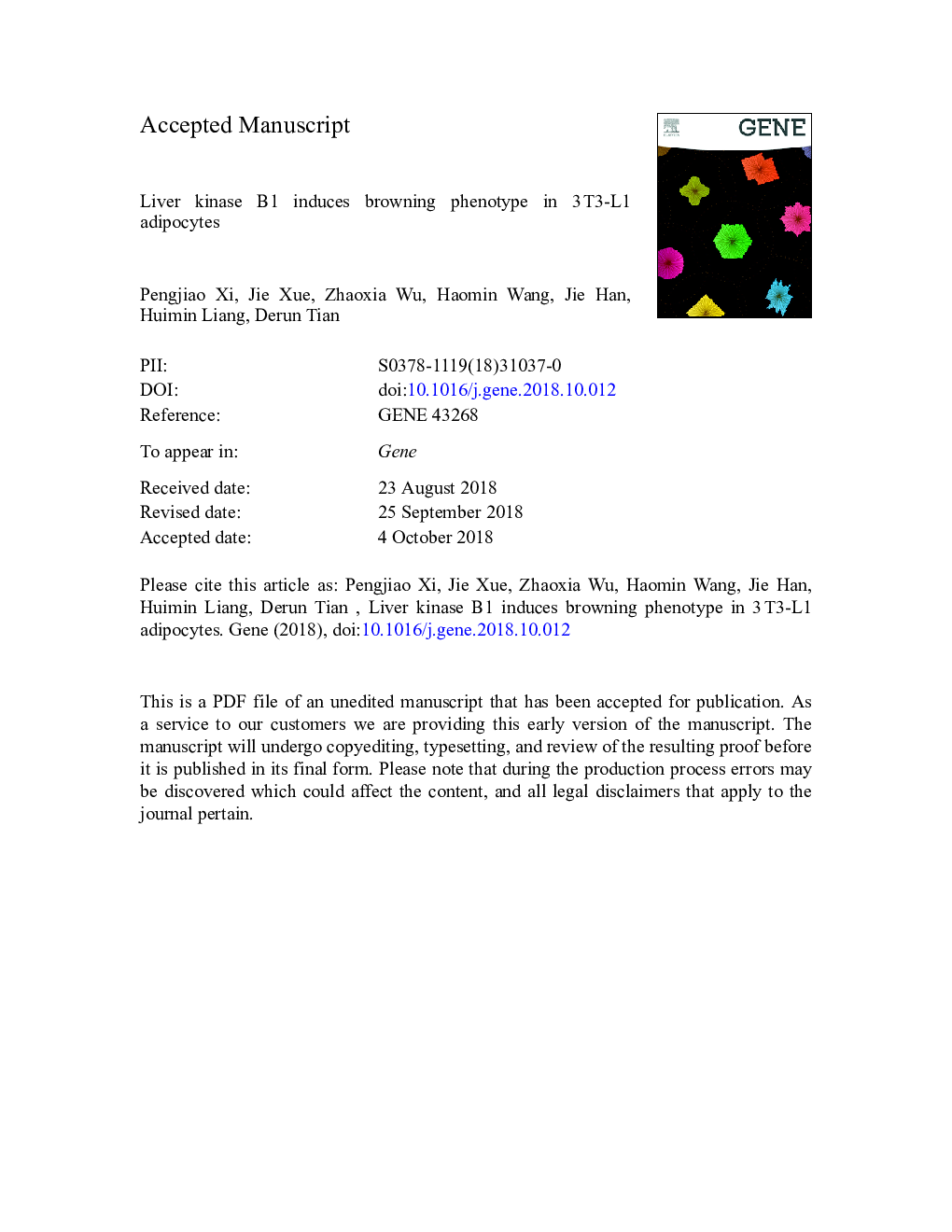| Article ID | Journal | Published Year | Pages | File Type |
|---|---|---|---|---|
| 11015208 | Gene | 2019 | 27 Pages |
Abstract
Induction of brown adipocytes in white adipose tissue is a promising therapy for combating human obesity and its associated disorders. Liver kinase B1 (LKB1) is a tumor inhibitor and metabolic modulator. Recent data suggest that LKB1 is necessary for adipogenesis, but its role in the browning of white adipocytes remains unknown. The objective of this study was to reveal the effect of LKB1 on browning. In our study, we showed that overexpression of LKB1 in 3â¯T3-L1 adipocytes up-regulated the expression of brown adipocyte markers, including UCP1, PGC-1α, Cidea, and PRDM16, and beige-cell-specific genes, such as CD137 and Tmem26. It was possible that the expression of UCP1 and other beige markers was increased by activation of PPARγ, resulting in the browning of 3â¯T3-L1 preadipocytes. The browning effect was abolished by a PPARγ inhibitor (GW9662). Moreover, these effects were dramatically abrogated by silencing of LKB1. Additionally, LKB1 decreased the expression levels of adipogenesis proteins (C/EBPα and SREBP1) and up-regulated lipid catabolism protein, perilipin (PLIN). In summary, the study suggested that LKB1 induces the browning of white adipocytes, in addition to promoting lipid metabolism. Therefore, LKB1 may be a helpful therapeutic candidate for treating obesity.
Keywords
Sirt1TMEM26PPARγ coactivator-1αPRDM16SREBP1sirtuin1HSLLPLCPT1PGC-1αAMPKBATLKB1PPARγC/EBPαUcp1White adipose tissuebrown adipose tissueAnti-obesityhormone-sensitive lipaseLipoprotein lipaseSterol regulatory element binding protein 1uncoupling protein 1transmembrane protein 26adenosine monophosphate-activated protein kinaseperilipinWATPLINliver kinase B1peroxisome proliferator-activated receptor γ
Related Topics
Life Sciences
Biochemistry, Genetics and Molecular Biology
Genetics
Authors
Pengjiao Xi, Jie Xue, Zhaoxia Wu, Haomin Wang, Jie Han, Huimin Liang, Derun Tian,
